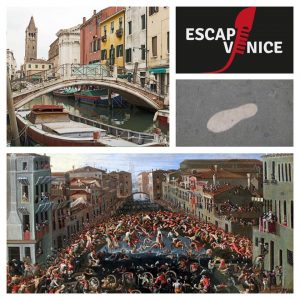
The name of the Bridge of Fists is linked to an ancient tradition of Venice, the Fist War. The inhabitants of two opposing factions, the Castellani of S. Pietro di Castello and the Nicolotti of S. Nicoló dei Mendicoli, clashed “punches” on the upper part of the bridge. Until the 18th century the bridges had no parapets, so the aim of the fight was to throw the opponent into the canal.
The team who managed to keep his men on the bridge won. The authorities did not oppose the battle, on the contrary. About 300 challengers from each faction gathered at the foot of the bridge to fight with sticks but especially fists! The curious were many and they looked out the windows or watched from boats.


